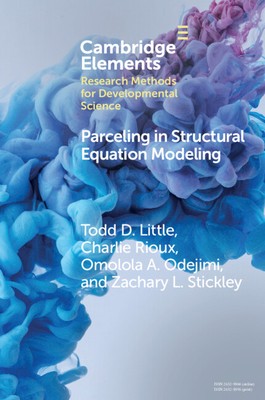
- We will send in 10–14 business days.
- Author: Todd D Little
- Publisher: Cambridge University Press
- ISBN-10: 1009211641
- ISBN-13: 9781009211642
- Format: 15.2 x 22.9 x 0.4 cm, minkšti viršeliai
- Language: English
- SAVE -10% with code: EXTRA
Reviews
Description
Parceling is pre-modeling strategy to create fewer and more reliable indicators of constructs for use with latent variable models. Parceling is particularly useful for developmental scientists because longitudinal models can become quite complex and even intractable when measurement models of items are fit. In this Element the authors provide a detailed account of the advantages of using parcels, their potential pitfalls, as well as the techniques for creating them for conducting latent variable structural equation modeling (SEM) in the context of the developmental sciences. They finish with a review of the recent use of parcels in developmental journals. Although they focus on developmental applications of parceling, parceling is also highly applicable to any discipline that uses latent variable SEM.
EXTRA 10 % discount with code: EXTRA
The promotion ends in 21d.06:56:27
The discount code is valid when purchasing from 10 €. Discounts do not stack.
- Author: Todd D Little
- Publisher: Cambridge University Press
- ISBN-10: 1009211641
- ISBN-13: 9781009211642
- Format: 15.2 x 22.9 x 0.4 cm, minkšti viršeliai
- Language: English English
Parceling is pre-modeling strategy to create fewer and more reliable indicators of constructs for use with latent variable models. Parceling is particularly useful for developmental scientists because longitudinal models can become quite complex and even intractable when measurement models of items are fit. In this Element the authors provide a detailed account of the advantages of using parcels, their potential pitfalls, as well as the techniques for creating them for conducting latent variable structural equation modeling (SEM) in the context of the developmental sciences. They finish with a review of the recent use of parcels in developmental journals. Although they focus on developmental applications of parceling, parceling is also highly applicable to any discipline that uses latent variable SEM.


Reviews